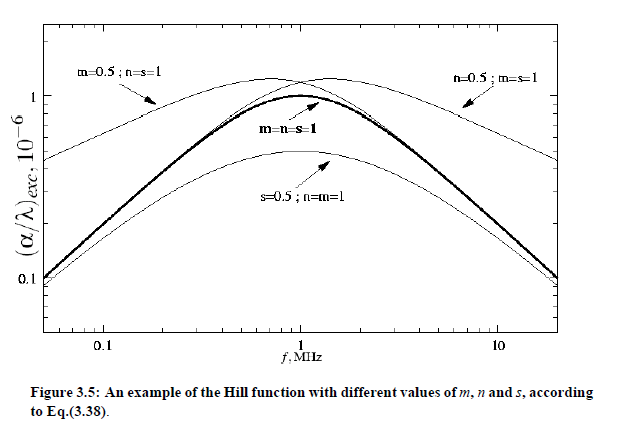2003-(II)-Ultrasonic techniques - The Resonator
Article Index
Noncritical ultrasonic excess absorption:
Fast elementary molecular reactions, that are usually exhibited by ultrasonic excess absorption spectra, with the inverse relaxation time in the frequency range of measurement, are conformational changes, protolysis and hydrolysis, as well as dimerization and complexation mechanisms. Chemical equilibria are associated with Debye-type relaxation terms, exhibiting discrete relaxation times τ. The excess absorption for one relaxation process can thus be described by:
with ω = 2πf , and A being the relaxation amplitude. Let X and Y represent different conformers of the same species in a dynamical equilibrium. The unimolecular reaction scheme is then simply given by:
Here kf denotes the forward rate constant and kr represents the reverse rate constant. Both constant are related to the equilibrium constant K = kf /kr and to the relaxation time by:
In order to discuss some general characteristics of ultrasonic relaxation, an energy scheme is sketched in Fig.(3.4), where a (hypothetical) potential is given as a function of the molecular volume of the species undergoing a boat/chair conformation equilibrium like that of cyclohexane:
In Fig.(3.4) it has been assumed that the species X and the species Y differ from one another by the molar reaction volume:
and by the reaction enthalpy ∆H . In principle, the idea of getting information about α_exc is simple. In a sound field, the energy profile oscillates around the equilibrium curve, as indicated by the dashed and dotted curves in Fig.(3.4). The autocorrelation function for thermal fluctuations of the population numbers NY (t) and NX (t) of species Y and X , repectively, in a given volume element and thus the autocorrelation function of the thermal fluctuations in the density ρ of the sample is characterized by an exponential decay:
with the autocorrelation time τ. The liquid system tends to follow the oscillations in the potential curve. The transition from one conformation to another is controlled by the activation enthalpy barrier ∆H > RT , establishing a finite probability for that conformational change. In accordance with the Le Chatelier principle it follows the reaction.A time lag between pressure and density in the sound field leads to a dissipation of acoustic energy with an attenuation coefficient α. At f (2πτ)−1 the system has sufficient time to reach the equilibrium without significant decay. At high frequencies f (2πτ)−1, the system can not follow the rapid pressure variations. In the frequency range f ' (2πτ)−1, sound energy dissipation per cycle has a maximum, leading to the characteristic profile of Debye term. The unique Debye term fits spectra pretty good in case of well defined molecular processes. Sometimes it is not possible to describe an excess absorbtion spectrum by one Debye term. Especially, when different molecular processes exist in the frequency range of measurement it is mostly necessary and possible to apply a sum of Debye terms:
Unfortunately, sometimes molecular processes lead to very complicated spectra; sequently, they can only be regarded as a sum of Debye-terms with a particular distribution of amplitudes. Menzel at al. found the relaxation spectral function, originally introduced by Hill, discussing non-exponential decay in the polarization of dielectrics, to be favorably utilized in physical acoustics. The Hill function is given by:
where A denotes an amplitude. The Equation reflects an underlying continuous relaxation time distribution with a characteristic relaxation time τ and with parameter m,n and s ,(0 ≤ m,n,s ≤ 1), that determine the width and the shape of distribution function. If m = n = s = 1 then the Hill spectral function corresponds with a Debye term. bold plot in Fig.(3.5). With a reduced number of adjustable parameters the restricted Hill function:
is then appropriate.









